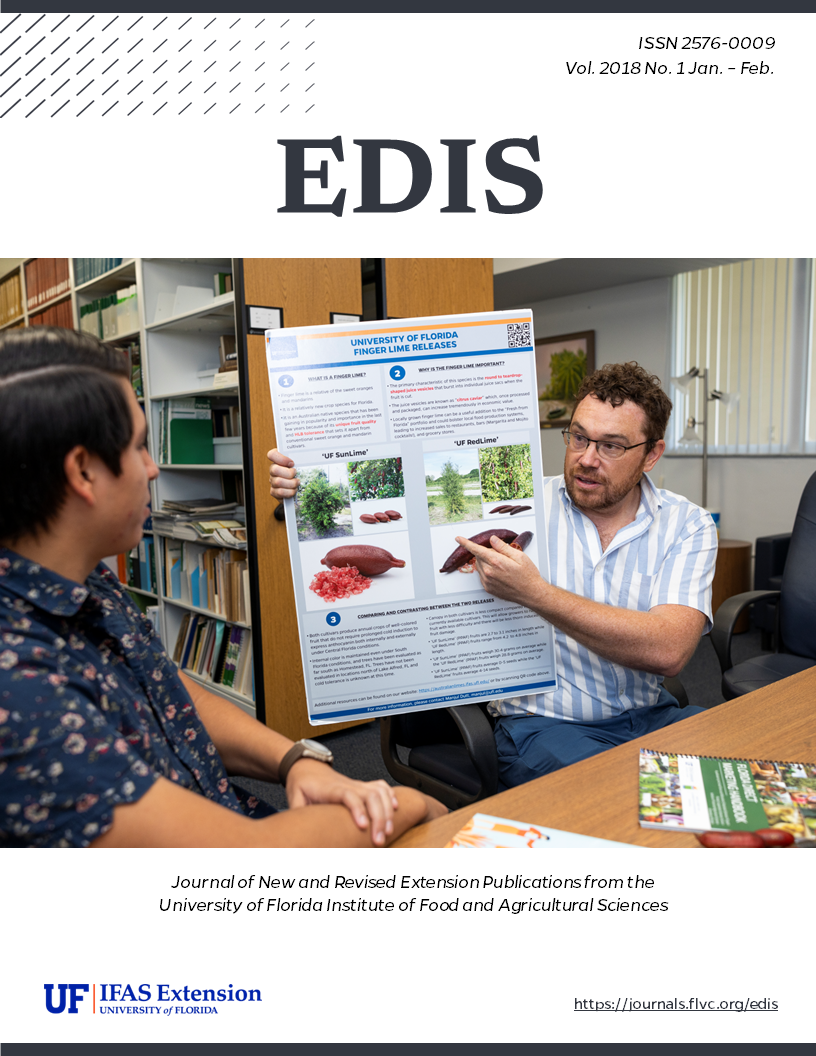Abstract
This EDIS publication is an alternate version of a page published first on the Featured Creatures website. The Featured Creatures collection provides in-depth profiles of insects, nematodes, arachnids and other organisms relevant to Florida. These profiles are intended for the use of interested laypersons with some knowledge of biology as well as academic audiences. This 4-page fact sheet that discusses the ebony jewelwing was written by Alfred Runkel, Nathan Burkett-Cadena, and Andrea Lucky, and published by the UF Entomology and Nematology Department, November 2017.
References
Alcock J. 1979. Multiple mating in Calopteryx maculata (Odonata: Calopterygidae) and the advantage of non-contact guarding by males. The Journal of Natural History 13: 439-446. https://doi.org/10.1080/00222937900770351
Ballou J. 1984. Visual recognition of females by male Calopteryx maculata (Odonata: Calopterygidae). The Great Lakes Entomologist 17: 201-204.
Bick GH, Bick JC. 1977. The significance of wing clapping in Zygoptera. Odonatologica 7: 5-9.
Burcher CL, Smock LA. 2002. Habitat distribution, dietary composition and life history characteristics of Odonate nymphs in a blackwater coastal plain stream. The American Midland Naturalist 148: 75-89. https://doi.org/10.1674/0003-0031(2002)148[0075:HDDCAL]2.0.CO;2
Capinera JL. 2010. Insects and Wildlife: Arthropods and Their Relationships with Wild Vertebrate Animals. Chichster: Wiley-Blackwell. https://doi.org/10.1002/9781444317688
Hassall C. 2015. Strong geographical variation in wing aspect ratio of a damselfly, Calopteryx maculata (Odonata: Zygoptera). PeerJ 3: 1-17. https://doi.org/10.7717/peerj.1219
Hussain R, Ahmed KB. 2003. Damselfly naiads (Odonata: Zygoptera) of Sindh-Pakistan. International Journal of Agriculture & Biology 5: 53-55.
Martin RDC. 1939. Life histories of Agrion aequabile and Agrion maculatum (Agriidae: Odonata). Annals of the Entomological Society of America 32: 601-619. https://doi.org/10.1093/aesa/32.3.601
Nevin RF. 1929. A study of the larva of Calopteryx (Agrion) maculata (Odonata: Agrionidae). Transactions of the American Entomological Society 55: 425-448.
Roughgarden J. 2004. Evolution's Rainbow: Diversity, Gender, and Sexuality in Nature and People. California: University of California Press.
Silsby J. 2001. Dragonflies of the World. Australia: CSIRO Publishing. https://doi.org/10.1071/9780643100879
Waage JK. 1972. Longevity and mobility of adult Calopteryx maculata (Beauvois, 1805) (Zygoptera: Calopterygidae). Odonatologica 3: 155-162.
Waage JK. 1979. Dual function of the damselfly penis: Sperm removal and transfer. Science 203: 916-918. https://doi.org/10.1126/science.203.4383.916

